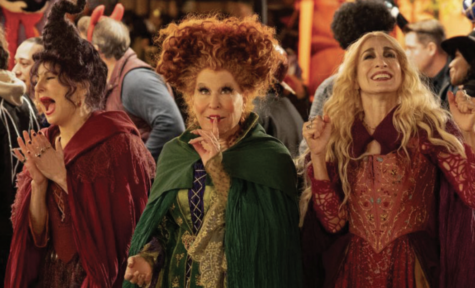Miseducation and ‘Fifty Shades of Grey’
April 6, 2017
Many know the franchise of “Fifty Shades of Grey” as a pop culture phenomenon; the erotic novel seemed to appear overnight on the nightstands and e-readers of millions of housewives. There have been both strongly negative and strongly positive reactions to this franchise going mainstream.
In a world where sex and sexuality are hotly debated topics, it is only natural for this franchise to quickly make headlines too. But, what is it really all about? What is the truth behind the fictional world created by E.L. James?
BDSM stands for Bondage and Discipline (B&D), Dominance and submission (D/s), Sadism and masochism (S&M), or Sadomasochism. B&D is the act of being restrained along with giving and receiving punishments. D/s is when one partner assumes a Dominant role and the other assumes a submissive. S&M is giving or receiving pain. Someone may engage in only one or all of these things to be considered a “BDSM player.” Engaging in these activities at a certain time are called “BDSM Play” or a “BDSM Scene.”
A common misconception perpetuated by pop culture is that BDSM must include sexual activity. That is simply false. Sexual activity and BDSM scenes are NOT the same thing; sexual activity and BDSM often remain separated. Many people who engage in BDSM play do not have a sexual relationship within their BDSM play.
This directly leads to my next point, if scenes can all be as different as the people participating in them, how does someone know what to expect from a BDSM scene?
Each scene is negotiated and is consensual between all involved. Merriam-Webster defines consent as a “permission for something to happen or agreement to do something.” Seems pretty straight forward, but not under the BDSM umbrella.
For most, we are taught consent means yes. However, in the world of BDSM, “yes” is not enough—informed consent is necessary. Anyone can say “yes” to something, but everyone involved in a BDSM scene needs to completely understand what they are consenting to.
Take a moment and think about this scenario, you just met someone who has never tasted macaroni and cheese; you must try to explain it to them. Maybe you start by explaining macaroni and cheese. You might say something like, “its salty but creamy, and it’s kind of mushy but also buttery.” Then you might say, “but its firmness will really depend on who cooked it.”
It gets complicated very quickly! Think about someone’s homemade mac & cheese; that’s a whole different story! What type of cheese did they use? What type of noodles? Did they make it spicy? Does the person consuming it like it spicy?
This is the difference between “yes” meaning consent and “yes, I understand” meaning informed consent. I can say “yes, I like mac and cheese,” but can I say “yes, I like your mac and cheese”?
Fifty Shades of Grey never accurately portrays consent. Anastasia, the main female character who assumes the submissive role, has no experience. Christian Grey, the male main character assuming the dominant role does not properly approach consent.
Quite frankly, Christian never explains the dynamic nor does he explain the experiences Anastasia should expect. He begins to talk about punishing her prior to her ever agreeing to a contract.
She is a complete novice, not just to BDSM, but to sex itself, as she states she is a virgin. This is a huge red flag. Beyond that, Christian begins showing up at her place of employment, showering her with extremely expensive gifts and engaging in other non-consensual behaviors.
Perhaps the next most important part of BDSM is how someone can stop something that is going beyond what they felt they were consenting to. This brings up the use of a safe-word. In some play, “stop” or “no” might be said to be taboo or add to the dynamic, but a safe-word is the hard-fast “NO, NO MORE, STOP” within a BDSM Scene.
The safe-word should be something out of the ordinary so that it stands out against any other words or phrases that might be said. The safe-word is discussed prior to BDSM play, to insure all involved understand what the safe-word are and what they mean. The important thing here is that everything is pre-negotiated, because definitions could vary person to person based on their unique personal experiences.
These dynamics can be very intense. After all, giving up control and inflicting pain is a very serious dynamic to engage in. Following a scene, many people need time to process and collect their thoughts about what they just experienced.
This is where aftercare comes in. This can be as simple as giving reassurances and compliments or as complex and long-term as caring for their health: mental or physical health. Many experienced BDSM players have an established aftercare routine that will make them and their partners feel safe and cared for following a scene. If aftercare is skipped over it can leave someone feeling worthless, hurt, or even feeling like they were violated or disrespected.
All in all, it is very important to separate real life from fantasy. What can end up popularized by a book or movie is not always an accurate portrayal of microculture.
Unfortunately, in the case of “Fifty Shades of Grey,” it is mostly Fifty Shades of Crap when it comes to educating the general public on consensual BDSM. The behaviors Christian displays are predatory, unhealthy, and completely inaccurate. If something stuck your fancy, I urge you to take a moment to do some actual research about the topic prior to “jumping in.”
The world of BDSM can be intimidating, dangerous, and even deadly if not properly researched by legitimately educational sources. Stay safe and stay consensual.









